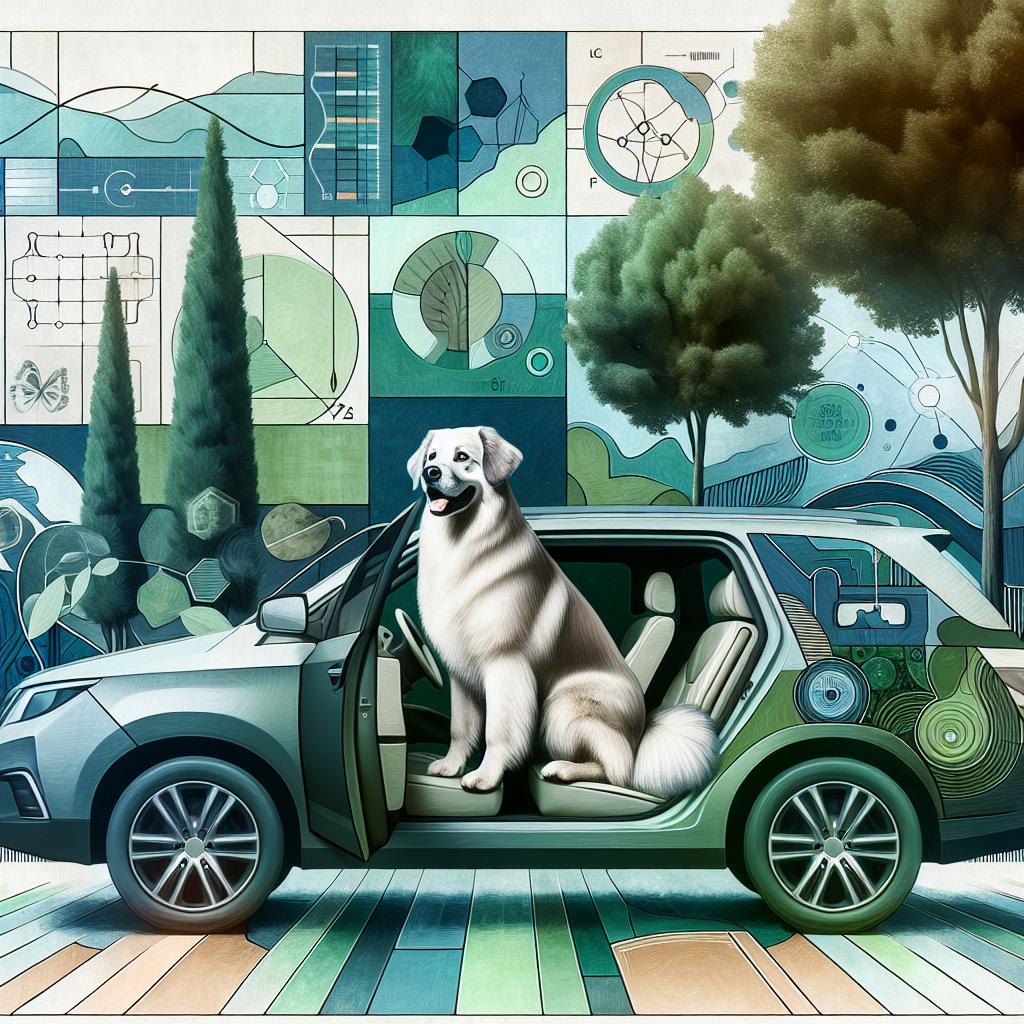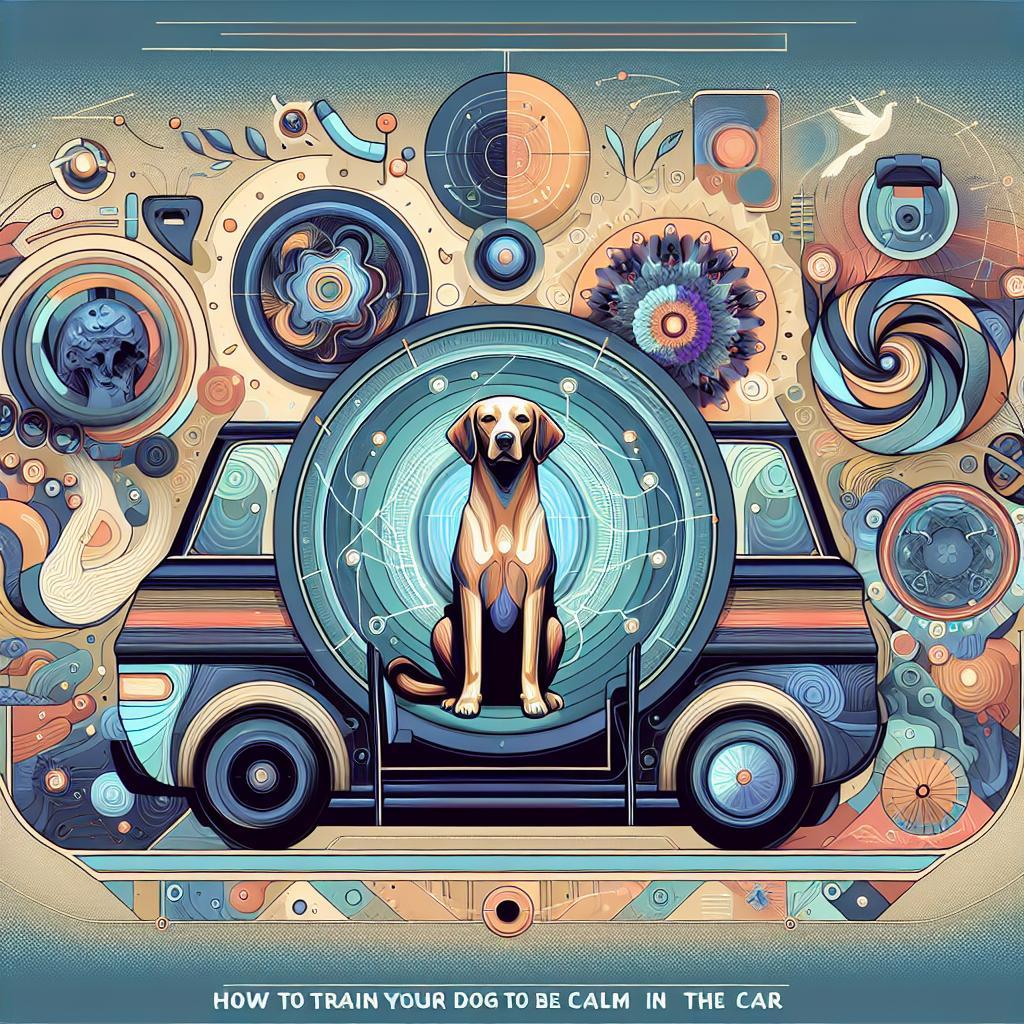How to Train Your Dog to Be Calm in the Car
For many dog owners, hitting the road with their furry companions can be a delightful adventure filled with wagging tails and eager noses pressed against the window. However, for some, the journey can quickly turn chaotic when excitement transforms into anxiety or restlessness. In this article,we will explore effective techniques to help your canine companion find their zen while cruising down the highway. From understanding your dog’s behavior to implementing simple training strategies, you’ll discover how to create a serene surroundings that transforms car rides into enjoyable excursions for both you and your pooch. buckle up as we embark on a journey to cultivate calmness in the car, ensuring every trip is a tail-wagging success!
Creating a Safe and Comfortable Car Environment for Your Dog
To ensure your furry companion feels secure during car rides, start by assessing the environment within your vehicle. A dedicated dog seat cover can provide both comfort and safety while protecting your seats from fur and grime.Moreover,consider using a harness or safety belt designed specifically for dogs,which will keep them restrained but comfortable,minimizing distractions for the driver. Adding familiar items, such as a favorite blanket or toy, can also help soothe your dog and create a sense of belonging.
Additionally, it’s crucial to maintain an ideal temperature within the car. Dogs are sensitive to heat, so ensure that air conditioning or window ventilation is provided in warm weather. Regular stops during longer trips allow your pet to stretch their legs and relieve themselves, contributing to their overall comfort. Here are some essentials to keep in mind:
- Ventilation: Ensure proper airflow.
- Hydration: Always carry fresh water.
- Frequent breaks: Schedule stops for bathroom and exercise.
- Calm music: Play soft tunes to create a soothing atmosphere.

Understanding Your Dogs Behavior and Triggers During Car Rides
Understanding your dog’s behavior during car rides is essential in creating a positive travel experience. Dogs may exhibit a range of emotions while on the road, from excitement to anxiety. Some common triggers include:
- Movement: Sudden accelerations, turns, or stops can cause confusion or fear.
- Sound: The noise from the engine,honking horns,or loud music can be overwhelming.
- Elevation: A change in height or feeling unsteady can trigger a sense of vulnerability.
Your dog’s past experiences with traveling can significantly influence their current behavior.If they have had unpleasant rides, the anxiety can manifest in various ways such as barking, drooling, or restlessness.To address these triggers, it’s essential to:
- Desensitize: Gradually introduce your dog to the car environment in a calm, controlled manner.
- Provide Comfort: Use familiar blankets or toys to create a soothing atmosphere.
- Use Positive Reinforcement: Reward your dog for calm behavior with treats or praise during the ride.

Effective Training Techniques to Promote Calmness in the car
To create a serene environment in the car for your canine companion, it’s essential to implement positive reinforcement training techniques. Start by introducing short car trips, gradually increasing the duration as your dog becomes more comfortable. Utilize treats and praise to reward calm behavior during travel. Consider using a designated blanket or bed in the car that smells like home, helping your dog to associate the vehicle with comfort and security.Engage in deep breathing exercises together; your calmness will rub off on your furry friend, reinforcing a sense of peace.
Another key technique is training your dog to establish a specific position or command that signifies calmness, such as sitting or lying down. Each time your dog settles in this position without becoming anxious,offer a treat or a gentle scratch behind the ears.Establish a consistent routine for car trips, including regular pre-trip rituals like a short walk or play session, which can help expend excess energy. To ensure safety and reduce distractions, consider using a pet seatbelt or crate, which not only promotes a safer ride but also helps your dog to learn boundaries and remain calm.

Establishing a Routine: Consistency for Long-Term Success
Creating a consistent routine for your dog’s car training is essential for fostering a calm and comfortable environment. Start by establishing regular car travel times, making sure your dog understands that this routine is a normal part of their day. Weekday morning trips, for example, can signal a cheerful outing, while weekend adventures can serve as special training sessions. Consistency will help your dog anticipate the car rides, reducing anxiety and promoting relaxed behavior. Here are some practical tips to integrate into your routine:
- Short Rides: Begin with brief trips to nearby parks or friends’ houses.
- Frequent Breaks: Schedule regular stops during longer journeys so your dog can stretch and relieve themselves.
- Positive Reinforcement: Reward your dog with treats and praise after calm behavior in the car.
Monitor your dog’s progress and adapt the routine as needed. Using a calm voice and a reassuring demeanor can help your dog feel more at ease.Consider tracking your training sessions in a simple table for clarity:
| day | Activity | Duration | Notes |
|---|---|---|---|
| Monday | Short Ride | 10 mins | First accomplished calm trip! |
| Wednesday | Park Visit | 20 mins | Focus on sit command. |
| Friday | Longer Trip | 30 mins | Positive reinforcement after arrival. |
By maintaining regularity in your dog training sessions, you contribute to their comfort and calmness in the car, paving the way for enjoyable travel experiences.
Q&A
Q&A: How to Train Your Dog to Be calm in the car
Q: Why is it important for my dog to be calm during car rides?
A: A calm dog during car rides contributes to a safer driving experience. An anxious or restless dog can become a distraction to the driver, leading to potential accidents. Additionally, teaching your dog to be calm can help reduce their stress levels, making the travel experience more enjoyable for both you and your furry companion.
Q: What signs should I look for to know my dog is anxious in the car?
A: Common signs of anxiety in dogs include excessive barking, panting, drooling, pacing, attempts to escape, or even motion sickness. If your dog is showing any of these behaviors, it may be an indication that they need some extra training to feel comfortable and secure in the vehicle.
Q: At what age should I start training my dog for car rides?
A: It’s best to start training your dog when they are a puppy,but it’s never too late to start! Early exposure to car rides,ideally at a young age,helps them associate the car with positive experiences. Though, older dogs can also learn to be calm with the right training techniques.
Q: What steps should I take to introduce my dog to the car?
A: Begin by letting your dog explore the car in a stationary position. Use plenty of positive reinforcement—treats and praise—when they approach the vehicle. Once they are comfortable, take short trips around the block to allow them to experience the ride without overwhelm. Gradually increase the duration of the trips.
Q: How can I create a calming environment in the car for my dog?
A: Ensure your dog has a designated space, such as a pet seat cover or crate, that feels cozy and familiar. Adding their favorite blanket or toy can provide comfort. Playing soft music or white noise might also help soothe their nerves during the journey.
Q: Should I use a restraint system in the car for my dog?
A: yes, using a harness connected to a seatbelt or a crate is a safe way to secure your dog in the vehicle. This not only keeps them safe in case of sudden stops but also helps prevent them from moving around anxiously, making it easier for them to settle down.Q: What if my dog continues to show anxiety despite training?
A: If your dog still struggles with anxiety in the car, consider consulting with a professional dog trainer or a veterinary behaviorist. They can provide tailored strategies and may suggest gradual desensitization techniques or, in some cases, anxiety-reducing medications.
Q: How can I make car rides more enjoyable for my dog?
A: Incorporate positive experiences into your car rides. Bring along their favorite treats, toys, or even take them to places they love (like the park). The more positive associations they have with the car, the calmer and happier they will be during future trips.
Q: How long does it take for a dog to learn to be calm in the car?
A: Each dog is unique, and the time it takes to train them can vary significantly. Some dogs may adapt quickly, while others may take weeks or even months to feel completely at ease. Consistency and patience are key, so regular practice and positive reinforcement are essential elements of the training process.
Q: any final tips for keeping my dog calm on long car trips?
A: Yes! Make regular stops during longer trips to allow your dog to stretch, relieve themselves, and drink water. Also, avoid feeding them a large meal right before traveling to minimize motion sickness. Lastly, keep your dog’s routine as consistent as possible to help them feel secure and settled.Through patience and training, your dog can learn to enjoy the journey just as much as the destination!
wrapping Up
transforming your car into a serene space for both you and your furry friend is an achievable goal with patience and consistency. By following the steps outlined in this article—from establishing a calm environment and utilizing positive reinforcement to gradually acclimating your dog to the vehicle—you can foster a soothing travel experience.Remember, each dog is unique, and what works for one may not work for another; so be attentive to your pet’s cues and adapt your approach as needed. With love, dedication, and a bit of creativity, your journeys together can become moments of joy rather than stress. So buckle up, hit the road, and let the adventure unfold—happier travels await!

